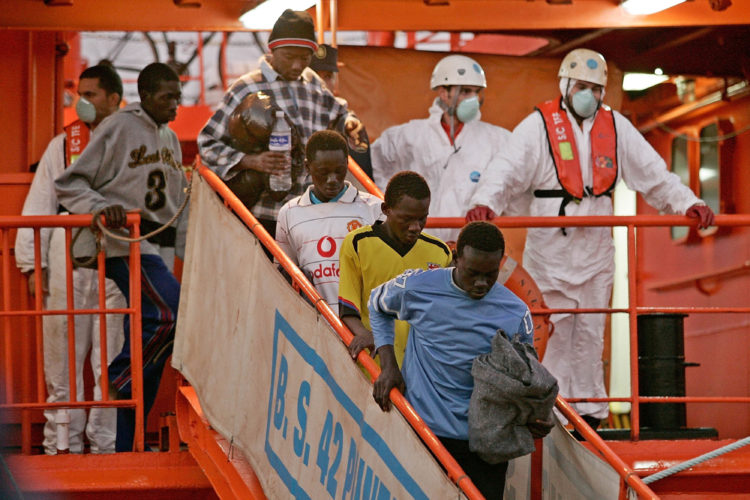Madrid, Spain—A wall across the Sahara desert. That’s what President Trump has advised the Spanish government to do to curb the migrant influx.
According to the Spanish Foreign Minister Josep Borrell, President Trump suggested the idea during the former’s visit to the U.S. He cited the pre-election promise to erect a wall at the American-Mexican border as evidence that people aren’t so opposed to such propositions as some might think. Borrell, however, quickly expressed his disagreement with the proposal.
He also stated that President Trump cited the length similarities between the two borderlines to support his suggestion. The US-Mexico border, however, is 1,954 miles whereas the Saharan desert is more than 3,000 miles long. Furthermore, Spain couldn’t erect such a wall given the national sovereignty questions that would arise. Although Spain owns two small enclaves on North Africa, Ceuta and Melilla, the rest of the northern part of Sahara belongs to Morocco, Algeria, Tunisia, Libya, and Egypt (the vast Sahara covers more countries, but these are the ones a border wall would presumably affect).
Borrell has previously served as the President of the European Parliament and thus understands the debate’s tricky spots.
So far in 2018, more than 35,000 migrants have arrived in Spain, making it the largest receptor of immigrants in Europe. Most immigrants come from Nigeria, the Ivory Coast, Guinea, and Senegal. More tragically, however, 1,600 have perished during the treacherous crossing.
“The reason the traffic has become deadlier is that the traffickers are taking more risk because there is more surveillance exercised by the Libyan coastguards,” said Vincent Cochetel, United Nations High Commissioner for Refugees’s special envoy for the central Mediterranean.
“They are trying to cut the costs: it costs them more to keep those people here longer in their warehouses, under captivity,” added Cochetel.
“We are calling for the European authorities, in particular, to come up with a coordinated strategy whereby boats can be systematically disembarked in different parts of Europe and where asylum claiming conditions and reception centres are in place ready to receive those people who arrive,” said Matt Saltmarsh of the UNHCR.
But the Europeans have been brainstorming possible solutions. They have, for example, increased cooperation with the Libyan coastguard. This has enabled the interception of more Europe-bound boats brimming with immigrants. Libya’s instability, following Colonel Gaddafi’s ousting, has fueled the rise of smuggling groups, which promise passage to desperate people and charge accordingly. U.N. reports suggest that smugglers demand thousands of dollars per person.
Another initiative has been the immigration agreement with Turkey. This, however, has been a double-edged sword. Every time the Turkish President Tayyip Erdogan feels unsure or cranky, he threatens to cancel the deal and flood Europe with immigrants fleeing the Syrian Civil War.
Another proposal gaining ground is the establishment of “regional disembarkation platforms” in the northern African coast. There, U.N. and humanitarian agencies could screen asylum seekers and determine their eligibility to immigrate to Europe.
Already have an account? Sign In
Two ways to continue to read this article.
Subscribe
$1.99
every 4 weeks
- Unlimited access to all articles
- Support independent journalism
- Ad-free reading experience
Subscribe Now
Recurring Monthly. Cancel Anytime.
Austrian Chancellor Sebastian Kurz, however, called them, “not essential in solving the problem of illegal migration.”
This option is still debated mainly because of fears that these centres will resemble Guantanamo Bay.
The European border guard agency, Frontex, is also destined to receive a personnel and budgetary boost.
Although the European Union symbolises and propagates inclusiveness, a lot of Europeans are skeptical about immigrants. In Germany, for example, wage stagnation and part-time employment have doomed many Germans to poverty. Quite a different tale from the constant news about Germany’s economic might and tremendous trade and account surpluses. And when immigrants enter German society with the same social benefits as poor Germans (if their asylum request is approved) and begin taking jobs, then one could understand the widespread anti-immigrant feeling that some might have.











COMMENTS
You must become a subscriber or login to view or post comments on this article.